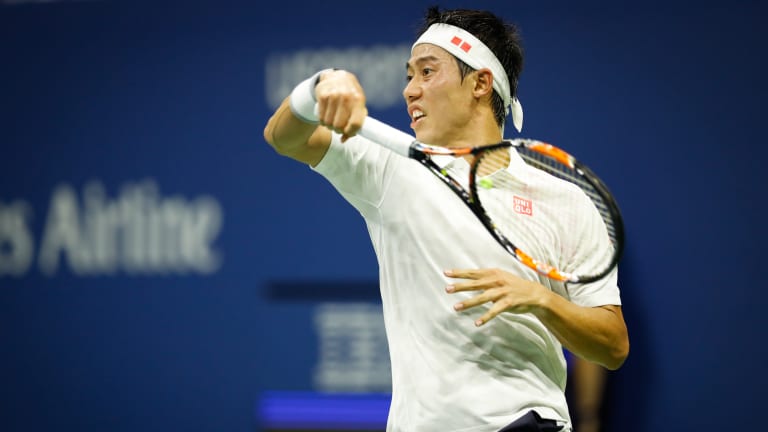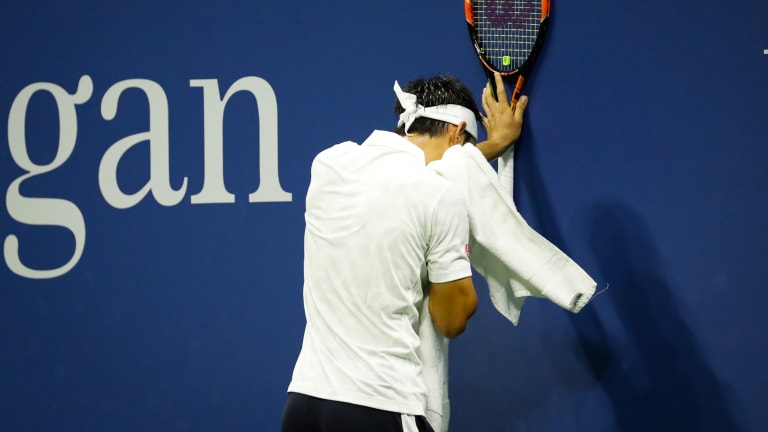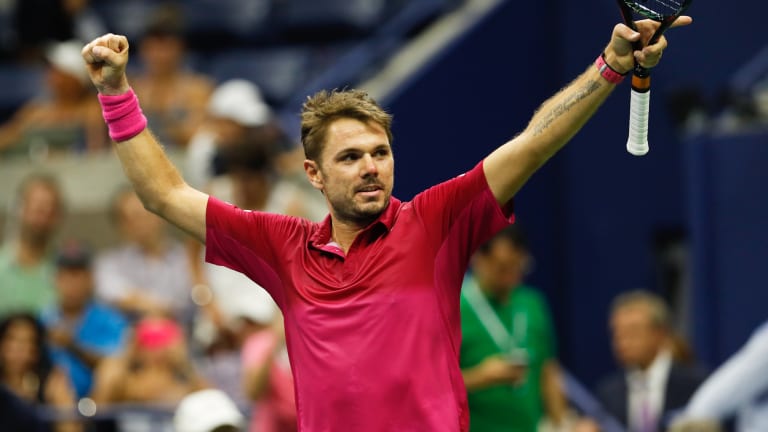NEW YORK—Stan Wawrinka is 2-0 in Grand Slam finals, and he’ll try to capture his third different major title on Sunday when he faces Novak Djokovic at the U.S. Open. It’s the latest chapter in a rivalry that’s short on overall competitiveness (Djokovic leads their head-to-head 19 to 4) but high on in-the-moment drama. In 2013, Wawrinka gamely lost a five-hour, fourth-round match to Djokovic at the Australian Open, 12-10 in the fifth set. Since then, the stout Swiss has proven to be one of sport’s best big-match players, which Djokovic experienced first hand in last year’s French Open final.
Now back at a career-high No. 3 ranking, Wawrinka is still capable of throwing in a dud when you least expect it. But typically, the deeper he goes in a draw, the more dangerous he becomes. That’s something which should worry Djokovic—whose form, after six rounds of play, is still something of a mystery—and was the reason Kei Nishikori’s U.S. Open came to an end on Friday.
It was hard to shake the strangeness of the just-completed semifinal between Djokovic and Gael Monfils from the mind when Nishikori and Wawrinka began their match on a steamy late afternoon in Flushing Meadows. The choking humidity was a factor in that contest, and its influence would persist. But after seeing Nishikori deliver compact and and perfectly timed swings throughout the first set, the Japanese star’s quarterfinal upset of Andy Murray was all I could think about. Nishikori’s bullet shots sound as good as they look, and they were hit with enough frequency to take the first set from Wawrinka, 6-4.
Wawrinka steadied the ship in the second set, but when he fell behind 0-40 on serve at 3-3, the match already seemed to be hanging in the balance. But rather than consuming Wawrinka with dread and trepidation, the deficit brought out the best in the big hitter. The velocity and depth of Wawrinka’s shots were constant from any position on the court, even while Nishikori traded skillful, aggressive strokes. It was peak Nishikori against peak Wawrinka, one hour into the sweat-filled showdown.


